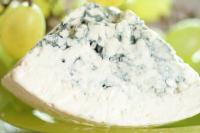What are hydroxides?
Hydroxides are special compounds in chemistry in which (mostly) metals and a "mysterious" hydroxide ion play the main role. These terms should be explained in order.

Hydroxides - so it is in many encyclopedias and chemistry books
Hydroxides are chemical compounds that contain a hydroxide ion. Than only moderately with chemistry More familiar, one is actually just as smart as before: The technical term "hydroxide" has been replaced by the (just as incomprehensible) technical term "hydroxide ion". However, you cannot avoid this special and very important ion.
The hydroxide ion - a simple explanation
- Ions are first of all charged molecules or atoms. They arise when you "miss" or "snatch" an additional electron from an atom or molecule.
- Some compounds, such as the well-known sodium chloride NaCl, are formed by two ions, namely the positively charged Na ion and the negatively charged Cl ion, a connection through electrical forces of attraction enter. If such substances with ionic bonds are dissolved in water, for example, the ions are created in the solution and ensure electrical conductivity.
- Even water receives ions (to a very small extent), namely as H.+-Ion and OH--Ion, also called hydroxide ion, as it consists of hydrogen and oxygen.
- If a solution contains excess hydrogen ions, it reacts acidic, if it contains excess hydroxide ions, it reacts basic.
Are bases metal hydroxides?
What are bases in chemistry and are they always ...
So what are hydroxides?
- Hydroxides are chemical compounds that contain such a hydroxide ion, i.e. an OH group.
- However, these groups fulfill a special function: if hydroxides are dissolved in water, for example, the compound splits off the OH ion and it dissociates.
- The simplest hydroxides consist of an alkali metal such as sodium, potassium or cesium and an OH group. The connections are powdery or salty. But more complicated metal complexes that have OH groups as ligands are also referred to (in a broader sense) as hydroxides.
- The best known hydroxide is sodium hydroxide NaOH, which can be bought as a white powder and which is used in soap production. Dissolve NaOH in water (caution: it gets hot and splashes; Protective goggles), the OH-ion splits off and the well-known caustic soda is formed, which changes the color of litmus paper (and many other dyes).
- In general, the aqueous solutions of hydroxides are soapy-oily, also slippery, and sting in the eyes (!).
How helpful do you find this article?



